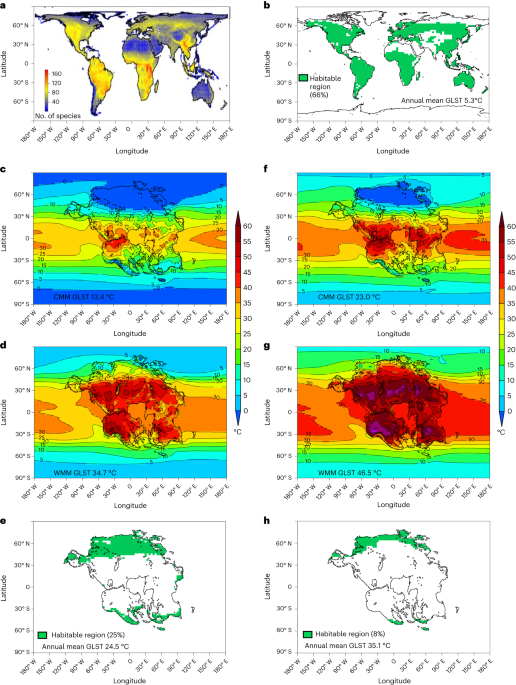Abstract
Mammals have dominated Earth for approximately 55 Myr thanks to their adaptations and resilience to warming and cooling during the Cenozoic. All life will eventually perish in a runaway greenhouse once absorbed solar radiation exceeds the emission of thermal radiation in several billions of years. However, conditions rendering the Earth naturally inhospitable to mammals may develop sooner because of long-term processes linked to plate tectonics (short-term perturbations are not considered here). In ~250 Myr, all continents will converge to form Earth’s next supercontinent, Pangea Ultima. A natural consequence of the creation and decay of Pangea Ultima will be extremes in due to changes in volcanic rifting and outgassing. Here we show that increased , solar energy (F⨀; approximately +2.5% W m−2 greater than today) and continentality (larger range in temperatures away from the ocean) lead to increasing warming hostile to mammalian life. We assess their impact on mammalian physiological limits (dry bulb, wet bulb and Humidex heat stress indicators) as well as a planetary habitability index. Given mammals’ continued survival, predicted background levels of 410–816 ppm combined with increased F⨀ will probably lead to a climate tipping point and their mass extinction. The results also highlight how global landmass configuration, and F⨀ play a critical role in planetary habitability.



Amusing to think we’re in the infinitesimally small blip in eternity when a bunch of upright monkeys invented 89,000 colors of vinyl flooring.